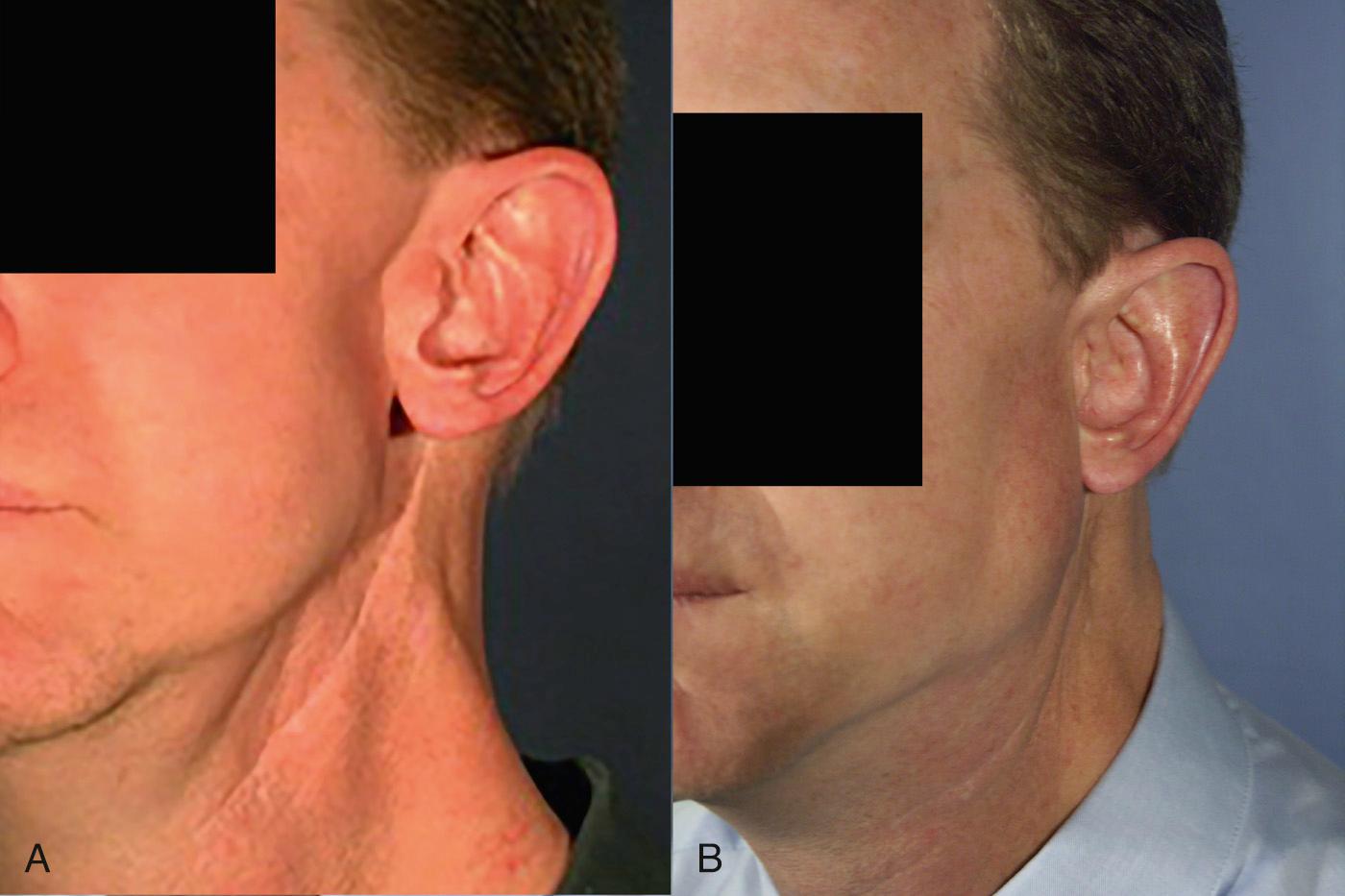Physical Address
304 North Cardinal St.
Dorchester Center, MA 02124
Parotidectomy is a common treatment for benign or malignant tumors of the parotid gland and for aggressive cutaneous facial tumors. Ablation of the gland with or without adjacent tissues may lead to poor facial contour at the angle of the mandible, at the cheek, zygoma, and temporal region. Associated radical neck dissection, sternocleidomastoid (SCM) muscle and temporal bone ablation may emphasize the deformity. Moreover, facial nerve sacrifice leads to a deficit of dynamic facial expression. The resulting cosmetic deformities can affect a patient's self-image and decrease their quality of life ( Fig. 40.1 ). Despite major progress in reconstructive techniques, reconstruction after parotidectomy remains often suboptimal. In case of benign disease, the volume deficit is often small and requires mainly limited reconstruction procedures. For malignant tumors, the reconstruction processes become more complex, depending on the extent of the resection. The need for facial reanimation and adjuvant radiation therapy should also be anticipated. In such situations, the use of free tissue transfer is certainly the best option for reconstruction ( Table 40.1 ).

| Type of Reconstruction | Volume/Indication | Advantage | Disadvantage |
|---|---|---|---|
| Free fat | Small to moderate/superficial parotidectomy | Quick harvesting | 30–50% resorption Risk of infection Nonvascularized |
| Dermal fat graft | Small to moderate/superficial parotidectomy | Scar at the donor site, nonvascularized, infection | |
| Alloderm | Small/superficial parotidectomy | No donor site | Expensive, nonvascularized, infection |
| SMAS flap | Small to moderate | Vascularized, in situ | Limited volume |
| SCM flap | Small to moderate | In situ | Atrophy, neck asymmetry, spinal nerve lesion |
| TPF flap | Moderate | Close to the defect | Alopecia, scar, based on superficial temporal vessels |
| ALT flap | Moderate to large radical parotidectomy Adjuvant radiotherapy |
Vascularized, long pedicle, versatile, fascia lata and nerve graft harvesting through the same incision | Skin paddle color |
| Radial forearm | Moderate/adjuvant radiotherapy | Vascularized long pedicle | Donor site morbidity Skin paddle color |
| Supraclavicular flap | Moderate to large/adjuvant radiotherapy | Skin color, volume, neck reconstruction, fast harvesting, reliability | Volume depending on skin thickness, scar on the shoulder |
| OTTT | Small to moderate | Functional facial reanimation Close to the defect |
Often combined with another flap |
| Gracilis flap | Moderate | Functional reanimation | Technically demanding, good recipient facial vessels |
| Cervicothoracic flap | Moderate/skin reconstruction | Skin color | Moderate volume, vascularization depending on the thickness of the flap |
The majority of benign parotid gland tumors are treated with a superficial parotidectomy. Volume loss is, in most cases, limited and does not require major reconstruction. However, in cases of total removal of the gland, the volume deficit can lead to contour asymmetry and to dissatisfaction with cosmetic appearance. The decision to reconstruct must be approached individually, and many techniques are described in the literature. The most commonly used techniques include fat grafting, acellular dermis matrix derived from cadaver skin, superficial musculoaponeurotic system (SMAS), SCM muscle, and temporoparietal fascia (TPF) flaps.
Become a Clinical Tree membership for Full access and enjoy Unlimited articles
If you are a member. Log in here